I have read a lot of stories in outdoor magazines (including the unbeatable Traditional Bowhunter Magazine) that shout high praise for the merits of hunting feral hogs. I agree with the praise for hunting them, but they come with downsides. Growing up in south-central Oklahoma, I did not realize until recently how well off we were in regard to deer, turkey, and quail hunting without the presence of feral hogs.
Feral hogs have been present throughout much of the southern United States since early Spanish explorers introduced them. Soon after, they occupied southeastern Oklahoma, mostly in isolated pockets and in varying densities. In recent decades, their numbers have increased dramatically in Oklahoma. So has their range, especially since the early- to mid-1990s, when they found their way to my stomping grounds.
Like everyone else during this time, I considered feral hogs a novelty that offered a lot of intrigue and mystery. Hog hunters came out of the woodwork. Tall tales of “hog-zilla,” “monster-hog,” and so on began, and continue still. I too thought it was pretty cool to have a new critter roaming the woods. In addition to whitetail deer I’d have another big game species to hunt, one that was dangerous and unpredictable, with razor sharp tusks and a bad temper, too. It couldn’t get any better than that for a country boy like me with limited means for hunting native big game species. At the time, I didn’t understand two major problems in regard to feral hogs—they can’t fly, and they are not native to North America.
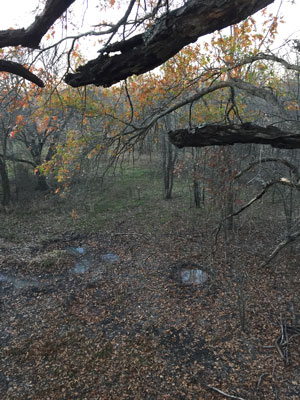
One of the many hog wallows where the author hunts.
The last time I checked, feral hogs can’t fly. So how did they begin appearing in locations separated by 10, 100, or 200 miles of rivers and streams, rangeland, woodland, cropland, roads, cities, and towns? You guessed it. They were hauled in pickups and stock trailers and released on properties where folks wanted to hunt them. Unfortunately, most of this was to the chagrin of many farmers and ranchers. In these instances, however, there were suddenly people willing to hunt or trap hogs on these properties in order to control their growing numbers and limit damage to farming and ranching operations. Today, feral hogs cause an estimated $1.5 billion dollars of damage to U.S. agriculture. Research by the Texas Extension Service concluded that each feral hog causes approximately $200 worth of losses to agriculture in their great state. Folks, there are lot of feral hogs in Texas.
Blinded by their novelty and intrigue, it took some time for the second major problem regarding feral hogs to sink into my thick skull. They are not native to North America. This means that historically they did not occur anywhere in North America and they never crossed the Bering Sea land bridge. So, one might ask, “Why this is a problem?” The answer is an abundance of reasons that impact our native plants, animals, soil, and water, all of which were created without feral hogs. Introduction of any non-native species, plant or animal, can cause serious problems in native ecosystems.
I know there are many feral hog enthusiasts who don’t think this non-native animal is causing any harm whatsoever. After all, they have been around in parts of the U.S. for over 400 years, and we still have our native wildlife, soil, and water. Some even go so far as to say biologists and other resource professionals are making a big deal out of nothing in regard to the negative impacts of feral hogs. Those folks are probably well intended, but perhaps still blinded by the novelty of hog hunting. The real question may be, “How much more native wildlife would we have without feral hogs?”
Feral hogs are opportunistic omnivores. This means that they will eat anything with a calorie that does not eat them first. What they eat at any given location depends on the season and diversity of plants and animals. In most of the U.S., acorns are an important food source for wildlife. Acorns help many species through the winter months. A sounder of 20 feral hogs weighing 150 pounds each can consume a lot of acorns. Even more are consumed when there are several sounders in an area. Additionally, most species of wildlife are reluctant to intermingle with feral hogs, therefore limiting their access to preferred food sources. The list of food sources that feral hogs negatively impact goes on and on, not to mention water issues such as fouled wetlands, ponds, and springs.
Today’s version of a feral hog is even more problematic, considering their reproductive capability. The feral hogs roaming our native landscapes are probably one of the most prolific reproductive animals on the planet. Most feral hogs are progenies of pigs that the commercial pork industry developed to be highly reproductive. Research on feral hog reproduction indicates that just to stabilize their population growth, 70 percent of them need to be removed. To eliminate a population is nearly impossible. Just keeping their population from growing requires a huge amount of time and effort that biologists, farmers, and ranchers don’t have. All of this simply boils down to the fact that for each feral hog, agriculture and native animals and plants are negatively impacted.
I probably have a lot of you fuming at my disdain for feral hogs but let me assure you that I do enjoy hunting them, especially with a longbow. I think they may have been created especially for spot and stalk bowhunting. And when they become so numerous that they begin eating morel mushrooms and destroying favorite spots by rooting, it’s time to go hunting.

Red River hog habitat.
Where I hunt in south-central Oklahoma, the fall of 2017 was a good year for acorns. I located a draw near the Red River with a grove of Shumard and burr oaks that were loaded. I knew the deer would be on the acorns like a turkey on a June bug in early October—if the hogs didn’t get them first. I placed a ladder stand nearby, but the hogs won. The month of October evolved into a series of frustrating hunts, hoping that my timing would find deer, not hogs, at the acorns. That never happened, so I eventually decided to use up some old arrows and broadheads that I didn’t mind breaking or losing on the tough hided hogs.
As I sat in the stand one beautiful late October evening, I began to hear hogs in several directions. As the evening passed the hogs got closer, and it became apparent that I was surrounded by at least four sounders, probably intent on the nearby acorns. They were making terrific noises, which sounded like someone was playing the sound track to the movie Aliens vs. Predator. The quiet evening solitude in the remote draw became pretty eerie as the strange sounds rose above all others and echoed past me toward the river bottom.
As prime time for deer approached, one sounder moved in and began scarfing up acorns, sounding like Kirby vacuum cleaners and stove top popcorn as they sniffed, sucked in, and popped open acorns with their jaws. I’m happy to say that one hog will no longer be eating acorns. At the shot, hogs ran in all directions, making a tremendous racket as they went. However, the commotion barely bothered the other sounders, dashing my hopes of them all leaving and allowing time for a deer to amble by.
With all of this commotion, I figured no deer in their right mind would be within several hundred yards. It was getting late and I had a good hike out to the truck through rough country, so I decided to climb down, retrieve my arrow, head out, and recover the hog the next morning. As I was cleaning off my arrow, a deer snorted nearby, whether at me or at the hogs, I’ll never know. Murphy’s law!
With the deer hunt now thoroughly blown, I was thankful that I at least did not lose my arrow and placed it in my quiver. I decided to head toward the loudest sounder on my way out, perhaps getting another shot at a hog. I traveled only a short distance before encountering another one, a boar heading toward the guttural alien noises. Despite the fact that he went by at 15 yards I had no shot because of the rough-leaf dogwood, American beauty berry, and greenbrier tangle, so I moved on. After another short distance, a boar came running directly toward me from where I was headed. At 10 yards and closing, the hog was completely unaware of my presence. I decided to draw in anticipation of finding a hole in the tangle to shoot through. Detecting motion, he turned on a dime and took off at a sprint, presenting no shot.
A bit disappointed at blowing two close opportunities, I moved on. Considering the encounters with the two boars, I was beginning to guess the reason for the ungodly, hair raising vocalizations they were emitting. Sure enough, as I got closer, I could see through the brush that several hogs were moving around in a tight group. One boar attempted to breed what was obviously a sow. Infuriated, the other boars in the sounder began to fight while emitting more scary vocalizations.
One boar must have got his butt whipped because he shot out of the group, stopping within bow range. Try as I might, I could not get a shot at him because of low hanging eastern red cedar tree limbs, so I watched him huff and puff like a pouting child. After he cooled off, apparently accepting his defeat, he headed straight to me as if I were pulling him to me with a rope. His chosen direction of travel was probably influenced by another sounder of hogs that seemed to be moving in, perhaps just as curious as I was of the commotion.
As the boar reached the eight-yard mark, my only option, as before, was to begin my draw and hope for a shot opportunity. Upon detecting my motion, this boar did not flee instantly. Instead, he crouched low, appearing ready to jump straight up from all four legs, and began popping his jaws. I thought, “Uh oh, this isn’t good” as I held my bow quarter drawn, wondering what was about to happen. After a few seconds that passed at an hour’s pace, the boar decided to leave. As he turned broadside, I shot. He made a guttural sound and crashed through the brush with my arrow, toward the breeding sounder where all kinds of commotion broke loose again. I could hear my arrow clinking on brush throughout the turmoil. Then a couple of hogs tore off in the opposite direction and all became quiet, with no sight or sound of hogs.
At this point, I decided to crawl under the cedar tree to look for sign of what I hoped was a good hit. If you’ve ever tried to maneuver under a big eastern red cedar tree, you know that a high percentage of their lower limbs are dead and about as stout as dead limbs on an Osage orange. So, I was crawling on my hands and knees under this tree with longbow in hand looking for sign when all of a sudden, I heard teeth popping again. It sounded close too! I looked up toward where the breeding party was located only to see another boar pointing me like a bird dog and popping his teeth.
One’s mind can stray during times like this and my mind went “uh, oh” again. That’s a bit of a white lie, because I don’t want to print the expletives that I was really thinking. It’s amazing how so many thoughts can run through one’s mind within so few seconds. Mine recognized two possibilities. First, this boar thinks I’m another boar challenging him for his sweetheart, which is not good. Second, this boar thinks I’m another sow in heat, which is REALLY not good! Being in the spot I was, not being able to stand up much less nock an arrow and shoot, all I could do was use my voice. So, I yelled at the boar in not so polite language to get out of there. The first shout only seemed to test the boar’s resolve. Fortunately, after more concerted vocalization on my part, the boar decided to turn tail and run. My wife told this story to her lady friends at church and one replied, “Oh, thank God that hog understood English!”
Safe Feral Hog Handling
Over the years, I’ve noticed photos accompanying feral hog articles showing hunters holding or processing feral hogs without using gloves. I know the argument and have used it myself in the past. There are thousands of people who have never used gloves or masks and never contracted any disease or illness. But, there have been several cases of people contracting an illness from handling hogs, so be safe and use gloves and a face mask. This includes handling quarters and boneless feral hog meat in preparation for cooking too. For more information about feral hogs, visit these sites:



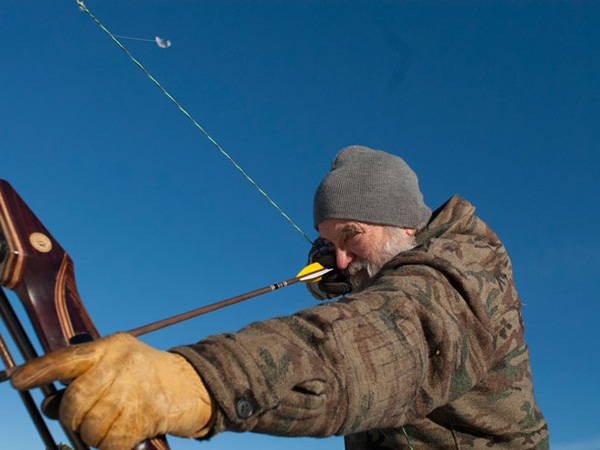
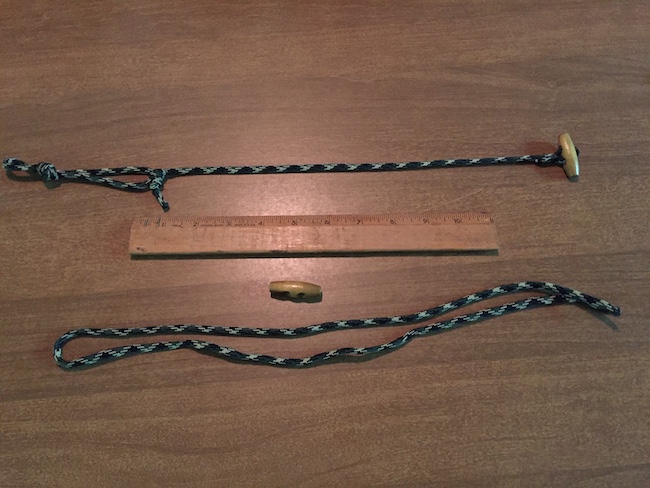
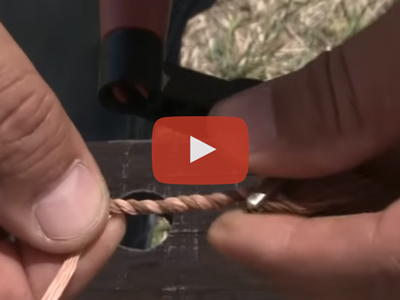
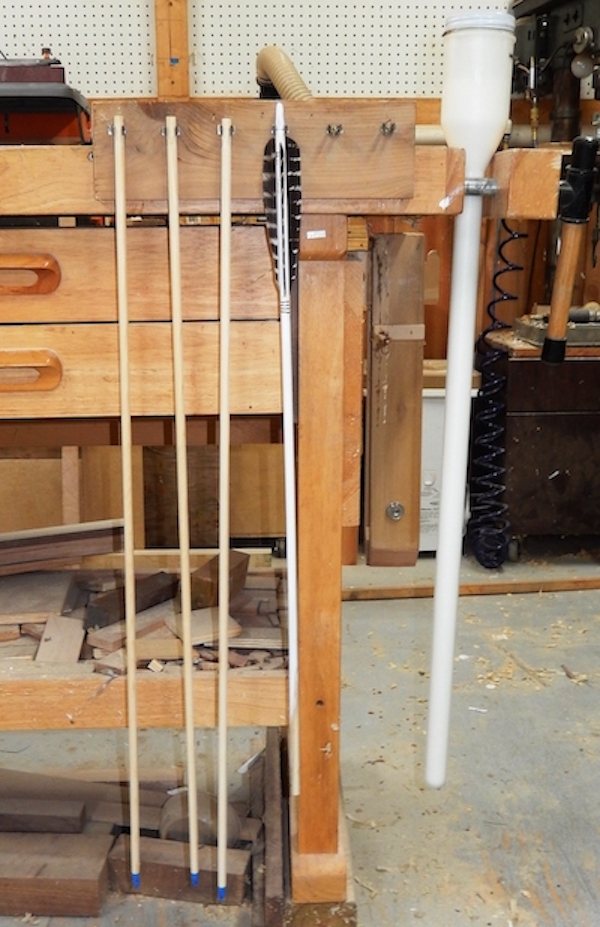
Good article! Thank you!
… I wish more people talked about the feral hog problem. I think it will have to come to the forefront of comversation not just among farmers and hunters but everyone eventually. They’re a real problem and should be hunted down as much as possible. Like nutria in Louisiana.
The feral pig populations all over the world are simultaneously exploding; besides the US, it is a problem in Japan, Europe and Israel. I’ve seen robotic Japanese scarecrow for Japanese farmers to try and frighten the pigs off.
The hog population, in addition to killing native species (and taking our food), also prevents natural reforestation, because, as you said, they are such rapid breeders and eaters. They eat forests bare so there isn’t new growth.
They’re smart, too! They hide well, out maneuver traps and barriers better than other animals, and learn noises of human predators better than other animals. It’s a big problem that is going to get bigger unless it’s taken care of. You can read articles about this problem in farmers’ magazines.
I forget the point in which they would actually start causing panic about our food supply, but it’s not completely impossible. They breed exponentially. (We’d all have to start hunting pig, then, and eating a lot of bacon.)
There have always been times when a prey population got to be too big and caused problems for themselves and the environment, like deer who starve themselves because there are so many of them. I think because pigs are so adaptable and smart, they end up causing problems for other animals, including us, instead of themselves. Dang hogs!
Bow hunting seems like a really good solution.
Blue lacy dogs are also good pig hunters.
I hope as many hunters as possible go out and kill wild pigs. It’s a big help to forests, forest animals, and, very importantly, farmers to kill as many of these guys as possible.
Keep bringing home the bacon!